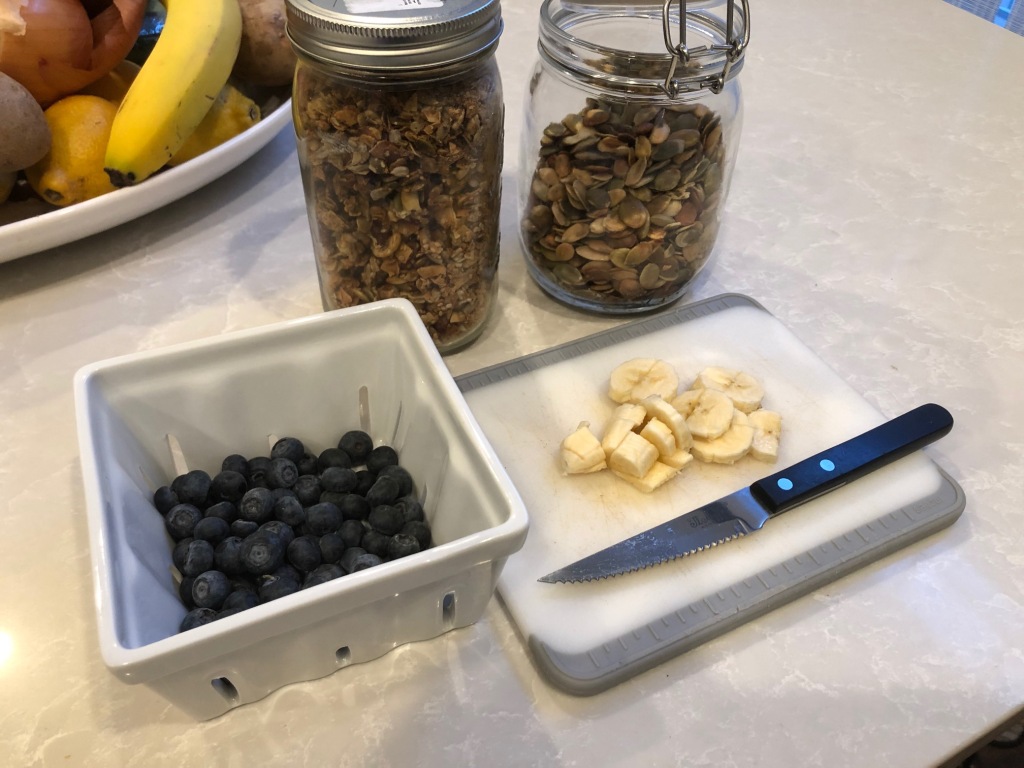Okay so it is really cold outside so something hot is usually what people want first thing but no one wants (read: no one in their right mind) a huge bowl of mush. Sure, oatmeal is super healthy and a go to for so many for that very reason but it doesn’t have to be an unpleasant experience in any way. Let’s talk about what’s important…
The Basics

Steel Cut vs. Anything Else? Steel Cut All The Way
Since they are one of the healthiest grains you can eat , start your day right and there is zero reason to choose anything else; they are third only to Oat Groat and Oat Bran. They are only steamed and toasted so the processing is minimal and you get the full benefit of the grain.
Build the Foundation
All you need to start a good oatmeal is Steel Cut Oatmeal, Brown Sugar and Milk; everything else is optional and based on your preference (I have included walnuts in my photo above because they are a non-negotiable for me). I would highly recommend adding salt, vanilla and cinnamon at a minimum to ensure a complete rounding of flavor.
Note: when I say “salt”, assume I am referring to sea salt unless I indicate otherwise. Always.
This morning I made for Chris Banana Walnut Oatmeal Topped with Fresh Blueberries and Bananas, Paleo Granola and Roasted Pumpkin Seeds so I based this blog on that but your options are endless; I almost never make the same oatmeal twice. Use what you have in your cabinet, you really can’t go wrong.
It takes almost no time for the oatmeal to cook (~20 minutes) so I throw everything in at the beginning. For a single bowl of oatmeal, I start with one half cup of oats and cover with milk (you will continue to add as it cooks to your desired consistency) then sprinkle in a pinch of salt and cinnamon, a tablespoon of brown sugar and a dash of vanilla. Turn to medium heat until it starts to boil, stirring frequently; careful as it can dry and burn to the pan easily. Dice half of a banana and crumble some walnuts, toss them in now also, this leads to a mixture texture within the oatmeal itself.
While the oatmeal cooks, start gathering the toppings. I diced the other half of the banana, grabbed the last of the blueberries, some paleo granola and roasted pumpkin seeds. Whole Foods has an amazing paleo granola with coconut if you don’t want to make it and pumpkin seeds are great to buy in bulk as they don’t really “spoil”.

The secret to a really nicely constructed oatmeal is equal distribution of the texture so I put the same thing on the bottom of the bowl before I spoon the oatmeal as I put on the top*! Sprinkle some granola on the bottom, spread the fruit evenly across the bottom and add some pumpkin seeds, spoon in the oatmeal and top with the same thing as the bottom.
Tip: This is the same for yogurt also, blog about that coming soon…..
The photos and food you see I make on this blog are things I would make and do on any day, not just for the blog. It’s important you know I obsess about how things look since you eat with your eyes first. Don’t do it to the degree I do (you will make yourself crazy) but I do think presentation is important (IMO).
Following is a photo of the finished product and I always have these cups on hand for to-go coffee and yogurt/oatmeal on the go; keep everything the temperature you desire for a while. I highly recommend them. Hope you enjoy……



